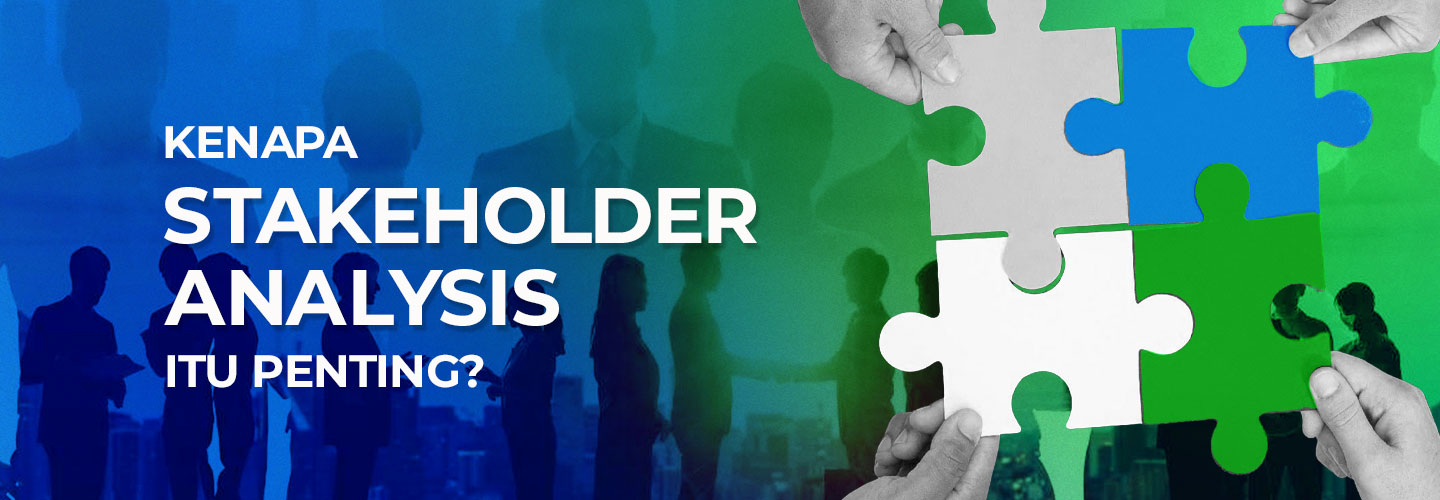The Important Role of Stakeholder Analysis in an Organization

Identifying or grouping stakeholders is crucial. His involvement is related to achieving a series of goals in an organization or company.
Stakeholder analysis is a deeper understanding of the needs of the stakeholders involved. To fully understand what stakeholder analysis means, first of all, we need to know what is a project and what are stakeholders.
What are Stakeholders?
The term stakeholder refers to one or a group of people who are part of the organization that will be affected by a project carried out by the team. They will be affected by being part of the team involved in the project.
Stakeholders are usually classified into two categories namely internal and external stakeholders. Internal stakeholders are people who work in the organization and will directly contribute to a project, either as members or leaders.
Meanwhile, external stakeholders are entities that are outside the organization. Examples of external stakeholders are government, customers or investors. Stakeholders are also divided into three main levels of priority. However, the most important stakeholders are employees, customers and investors regarding their role in keeping the business operating.
What is Stakeholder Analysis?
Now knowing the meaning of stakeholders, what is stakeholder analysis in project management? In simple terms, stakeholder analysis is the process of identifying potential stakeholders and separating them into different categories and groups according to their level of interest, participation and influence in a project.
Stakeholder analysis needs to be done before a project starts. This process also involves selecting and deciding the best communication technique for all elements of the group. In addition, every stakeholder also needs to be involved to an optimal level.
The Importance of Stakeholder Analysis in Project Management
Management and communication with stakeholders is as important as conducting a stakeholder analysis. Its role is key in contributing to the success of a project. The following are reasons for the importance of conducting a stakeholder analysis before starting a project.
1. Completing Important Unwanted Tasks
When managed properly, you will know the strengths of each stakeholder to use them effectively. Identify stakeholders who can work hard according to their interests and risks so that work can be completed in a short time with the right professionalism.
For example, when you need a budget report as soon as possible, submit it to the finance department so that it can be completed before the deadline. When you need a campaign for a new product, get the most innovative marketing stakeholders so you can get good results.
2. Reducing and Disclosing Risk
Surprise things can be a good potential if it turns a profit. However, some surprising things also have the potential to result in risks when a project is halfway done.
For this reason, good stakeholder management is very important to reduce risk when starting a project. Things that are hidden before a project takes place will only complicate things when the project is already underway without identifying risks that arise from stakeholders.
This can be anticipated by involving and maintaining healthy relationships with all stakeholders. That way, they can work with you as a team to spot potential risks and mitigate them before they become threats.
3. Increase Perceptions of Project Success
The perception of the success of a project must be created before the project even starts. Indeed there is pride in completing something from hard work, even though the results obtained are not optimal. However, it would be better if a project is carried out by utilizing the potential of each stakeholder.
Good results from the operation of a project can be supported by knowing the right stakeholder analysis. This is not always in line with the initial goal of starting the project, even so the results are still good.
4. Easier Project Closing
When you pass on a project deliverable to someone who is hearing it for the first time, it can fall into the wrong hands. That's why engaging with other stakeholders is so important.
The more you know about them, the more you know their ability to understand the delivered deliverables. Otherwise, they may set unrealistic expectations and be critical of meeting unsatisfactory standards.
It is different if the final results of the project are handed over to someone who has worked on the project carefully. These stakeholders will also appreciate and understand the results they get more than someone who doesn't do them.
Defining stakeholder roles according to their roles, interests, and influence on a project is the key to organizational success. This will have a positive impact, especially if implemented and understood together to achieve optimal goals.